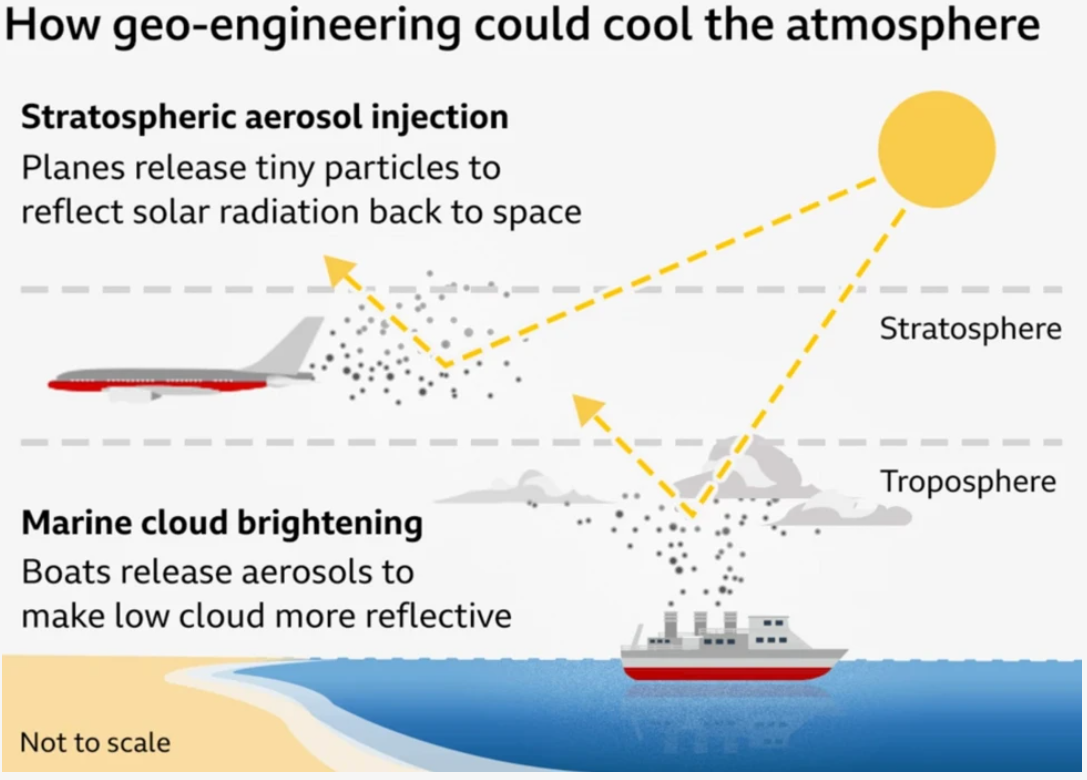-
Visit Students Portal
-
Visit Lecturer Portal

By Ramyar Ako
In controversial news, the UK government-backed-body known as ARIA has approved a budget of £60-million to dim the sun.
ARIA, which stands for Advanced Research and Innovation Agency, is conducting the experiments as part of the so-called Exploring Climate Cooling program that aims to bring global temperatures down.
Critics, however, voice real concerns about the impact of such experiments on weather patterns and our health.
ARIA’s experiments rely on a technique known as Solar Radiation Modification (SRM), which involves the thickening of the Arctic Sea ice and making clouds more reflective.
“There is a critical missing gap in our knowledge on the feasibility and impacts of SRM and to fill that gap requires real-world outdoor experiments,” said ARIA program director Mark Symes, announcing funding for five projects that will ultimately lead to real-world experiments.
One proposed Marine Cloud Brightening (MCB) project will involve spraying a fine mist of natural sea water into the atmosphere, mimicking the after effects of ash from volcano eruptions blocking out sun rays.
Another funded project is called Stratospheric Aerosol Injection (SAI) which will involve sending a small amount of natural mineral dust contained within a weather balloon high into the atmosphere to see how it responds in that environment.
“Before any outdoor experiment takes place there will be a full and transparent public consultation with necessary environmental assessment taken place,” stresses ARIA. “[Experimentation] will only occur after robust oversight measures which won’t include the release of any toxic materials.”
Experiments on sea ice thickening could take place as soon as this winter.
In 2024, global average temperatures ran at 1.6C above pre-industrial levels. This pattern exceeded the target set out by the 2015 Paris Agreement. Current projections show that the world will get 1.5C hotter by 2030.
Source: The BBC